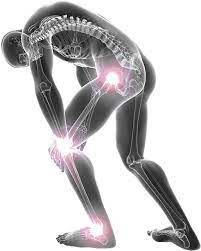How to Use Progressive Muscle Relaxation for Pain Relief
Many people in today’s fast-paced society suffer from chronic pain as a result of tension, stress, or strained muscles. It’s critical to find non-invasive, efficient ways to manage and reduce this discomfort. Progressive Muscle Relaxation is one such technique that has been acknowledged for its effectiveness (PMR). The goal of the PMR technique, which was created by Dr. Edmund Jacobson in the early 20th century, is to increase general relaxation and lessen muscle tension, both of which can greatly help with pain management.
Progressive Muscle Relaxation: What Is It?
A methodical approach called progressive muscle relaxation entails sequentially tensing and relaxing different muscle groups. The idea is straightforward: you may learn to control and lessen muscle tension and increase your awareness of physical sensations by deliberately tensing and relaxing different muscle groups. An increased sensation of relaxation and wellbeing results from this practice’s ability to interrupt the cycle of pain management and tension.
How Does PMR Aid in the Reduction of Pain?
Reduces Muscle Tension:
The main advantage of PMR is its capacity to lessen tension in the muscles. Anxiety and discomfort can be exacerbated by persistent muscle tension. By methodically releasing the tense muscles, PMR aids in easing the resulting discomfort.
Increases Blood Flow:
Circulation is improved by tensing and relaxing muscles. Increased blood flow to the muscles can facilitate healing, lessen stiffness in the muscles, and encourage general relaxation.
Encourages Deep Relaxation:
PMR has the potential to reduce stress levels by promoting deep relaxation. Since stress is frequently a major cause of pain, pain can be indirectly relieved by relaxing and reducing stress.
Improves Body Awareness:
People who practice PMR become more aware of their physical sensations. By recognizing stress and pain points, this increased awareness can facilitate the development of more specialized pain management techniques.
Enhances Sleep:
Sleep disruptions are common among those who have chronic pain. PMR can aid with pain management by encouraging relaxation and lowering muscle tension, which can improve the quality of sleep.
Methods for Practicing Gradual Muscle Relaxation
Acquire a Cozy Position:
Start by finding a comfortable posture to sit or lie in. Make sure you are in a peaceful setting free from interruptions.Start by taking a few deep breaths to help you relax and concentrate. Breathe in slowly by your nose, hold it for a short while, and then release the air through your mouth.
Flex and extend your muscle groups:
Work your way up to your head starting from your feet. For every muscle group.
Feet and Toes:
Tighten your foot muscles and curl your toes. Hold for five to ten seconds, then let go and concentrate on your sense of calm.
Calves:
Point your toes upward to contract your calf muscles. Hold, then let go.
Thighs:
Firmly contract the muscles in your thighs. Grab, then release.
Muscles in your abdomen should be taut. Hold, then let go.
Hands and Arms:
Tighten your arms and clench your fists. Hold, then let go and unwind.
Raise your shoulders so they are in line with your ears. Hold, then let go and set them down again.
Neck and Face:
Squeeze your eyes closed and tense your facial muscles. Hold, then let go.
Concentrate on the Relaxation:
Observe the difference between tension and relaxation as you release each muscle group. As your muscles loosen up, take note of how your body feels more comfortable overall.
Repeat as Necessary:
You might wish to repeat the procedure a few times or concentrate on particular regions that hurt or feel really tense. This will depend on your needs.
Advice for Efficient Work
Consistency:
The advantages of PMR can be increased with regular practice. If you notice tension rising, think about adding it to your daily routine.
Incorporate with Additional Methods:
When combined with other methods of relaxation like deep breathing, mindfulness, or meditation, PMR can be even more beneficial.
Seek Advice:
If PMR is new to you, you may find that recordings or guided sessions are helpful in learning the method. Numerous materials are accessible via healthcare practitioners or on the internet.
When to Get Expert Assistance
Even while PMR is a useful tool for stress and pain management, it’s crucial to speak with a doctor if you have underlying medical issues or chronic pain. A thorough pain management strategy should include PMR in addition to any other interventions, medical therapies, and physical therapy.
In summary
One useful and efficient method for treating pain and easing tension in the muscles is progressive muscle relaxation. You can enjoy increased general well-being, better relaxation, and a greater awareness of your body by including PMR into your routine. To get the greatest outcomes, as with any technique, consistency and practice are essential. Recall that it is always advisable to seek professional medical advice if you have any concerns or prolonged pain.



